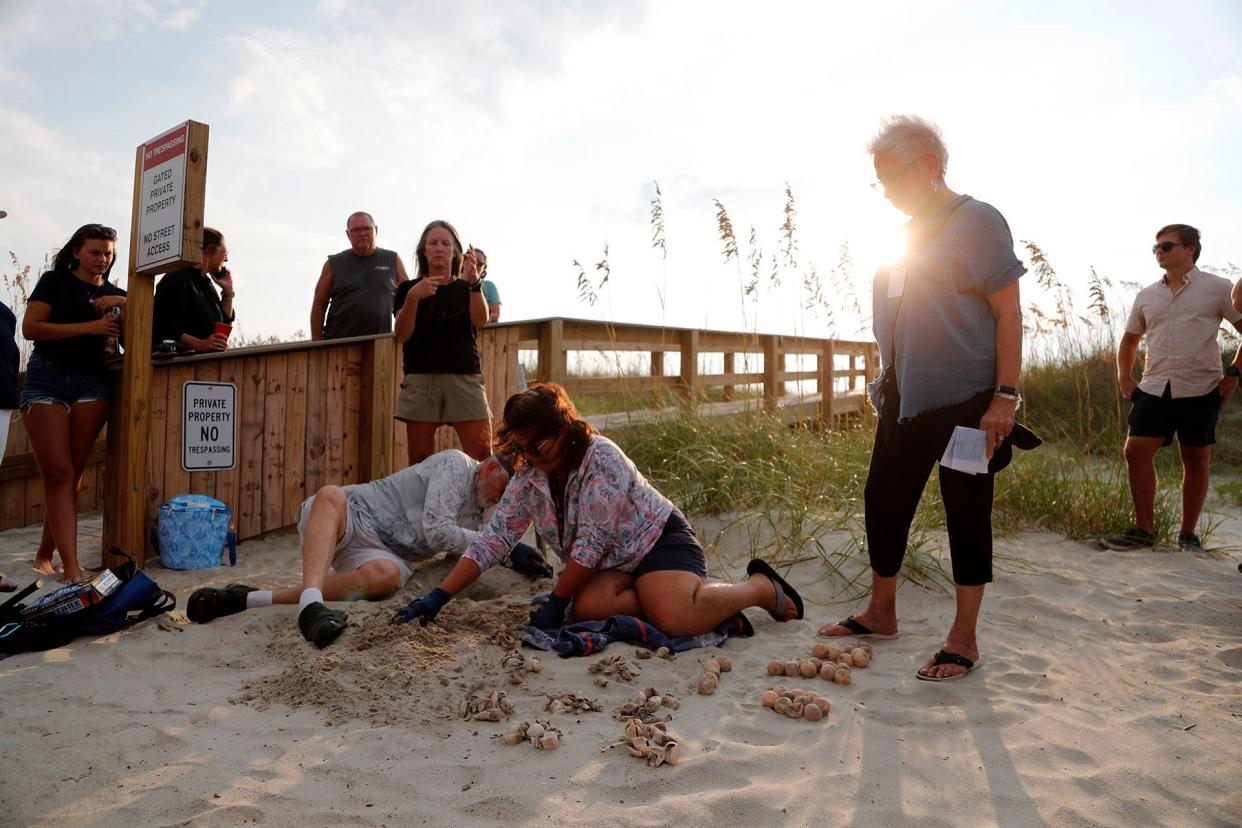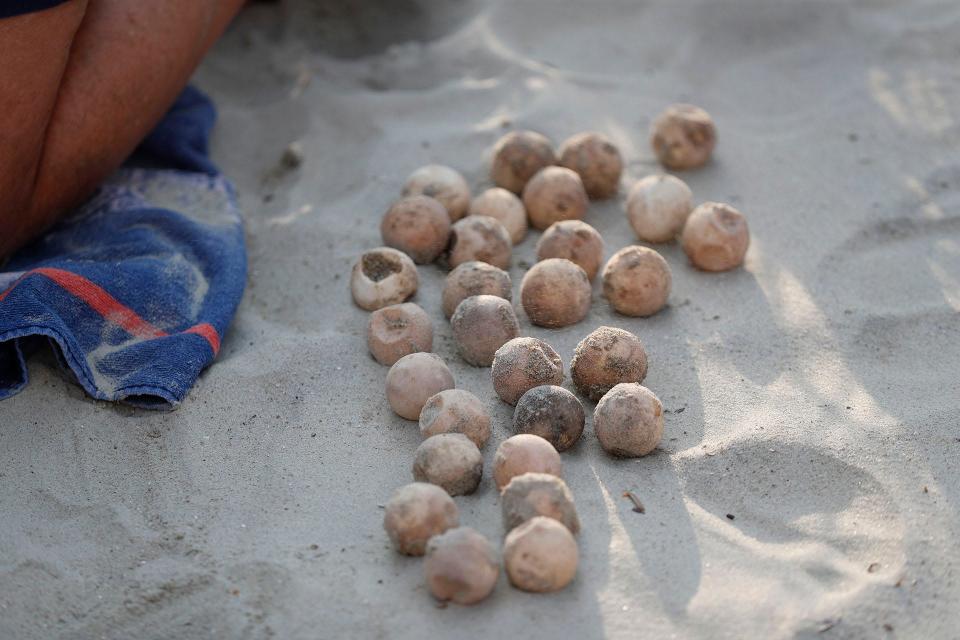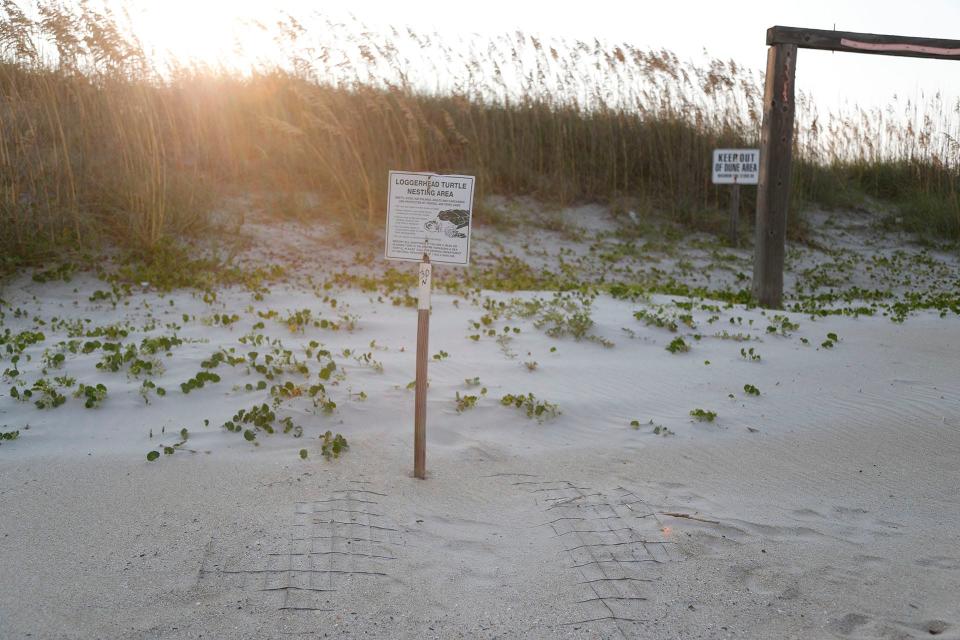Georgia's record breaking sea turtle nesting season winds to a close

Volunteers carefully dug through the sand during a recent sunset on Tybee Island, lifting the last loggerhead sea turtle eggs of the season out of their deep holes on the beach.
For the Georgia Sea Turtle Project, the final data collections from nests up and down the coast show another record-setting season for turtles.
Georgia surpassed its record for the most loggerhead sea turtle nests laid in a season this year. Counting more than 3,960 nests, Georgia has seen its best-yet season since hitting an all-time low of 358 nests in 2004, according to the Georgia Department of Natural Resources.
Related: From trash can to the ocean Addy the sea turtle is released at Tybee Island

More nests, more data
Surrounded by onlookers, the project volunteers set aside groups of 10 eggs at a time, counting those that were unfertilized or didn't hatch.
Tammy Smith, coordinator for the Tybee Sea Turtle Project, said digging up the nests at the end of the season helps volunteers find stragglers unable to break through the sand, as well as identify any hatchlings that died or eggs that were unfertilized.
The volunteers put the remaining eggs back into the nest, because research has shown the nutrients from their decomposition helps the dunes flourish. But before they do, they pluck one egg for research. It and other eggs collected from the other sea turtle projects on Georgia's coast are sent to Dr. Bryan Shamblin's research lab at the University of Georgia, where the eggs' DNA is analyzed. Nesting and DNA data is uploaded to seaturtle.org.
More: The Caretta Research Project celebrates 50 years of loggerhead conservation on Wassaw Island
Digging up the nests at the end of the season helps researchers get a better estimate of how many babies are making it to the sea by counting the opened, empty shells. Kris Williams, director of the Caretta Research Project on Wassaw Island, reported that as of mid-August about 60% of Wassaw's nests had hatched and nearly 15,000 hatchlings have emerged per her volunteers' counting. She expects the season to wrap up by the end of September.
Excavating the nests after the hatchlings have emerged also provides DNA evidence of how many mother loggerheads are returning or newly nesting, demonstrating the increase in total population over the years.
Slow and steady growth ahead
Georgia sees a roughly three-year cycle with a high year and then two medium to low years where there are fewer nests, according to Georgia Sea Turtle Program Coordinator Mark Dodd. And this year, they were expecting good news.
"We expected a big season and the past few big years we've had — 2019, 2016 — we have sort of blown past our previous records," Dodd said. "This year, we sort of crept past it."
While Georgia's record hit a new high this year, it wasn't by much. But this doesn't mean the turtles population is failing to grow. The population model Dodd and the Sea Turtle Program have developed with researchers at the University of Georgia predicted a population plateau for about the next 20 years as the number of turtles reach recovery goals.

According to Dodd, the slow down is just part of the sea turtle business. The long-living creatures take decades to reach sexual maturity. In turn, the babies hatched on the beaches in recent years from conservation efforts won't be adding back to the population for a long time.
The first conservation efforts in the 1980s, Dodd said, produced many of the loggerhead ladies nesting on Georgia beaches today. Despite these efforts, the population did continue to decline until its historic low in 2004, resulting in a lack of hatchlings up until recent years.
For subscribers: Ossabaw Island's feral hog eradication leads to rebounding sea turtle nests, stable environment
In the meantime, Dodd said there's a couple of big efforts that have helped bring the number of hatchlings up, such as fencing staked down over nests to foil predators like raccoons or feral hogs.
The invention of turtle exclusion devices, which help turtles escape from fishing nets, has cut down on mortality associated with the fishing and shrimping industries.
"I've been working with sea turtles for roughly 30 years, and some of the hatchlings that we put in the water 30 years ago are probably coming back as adults now and so that's gratifying," Dodd said. But it could take many decades to truly recover the population.
Marisa Mecke is an environmental journalist. She can be reached at mmecke@gannett.com or by phone at (912) 328-4411.
This article originally appeared on Savannah Morning News: Georgia breaks record for sea turtle nests this season

